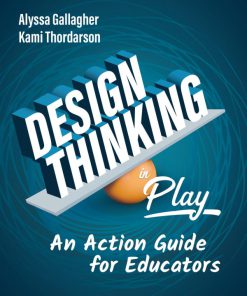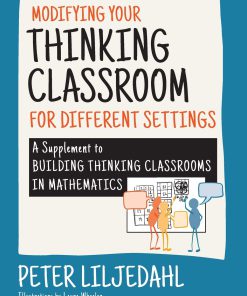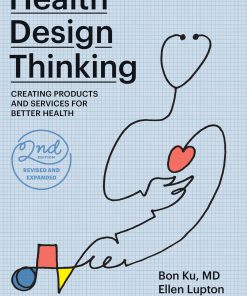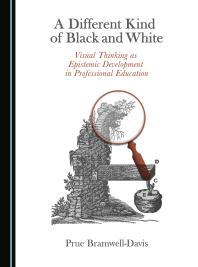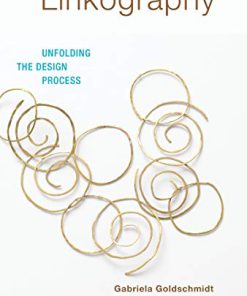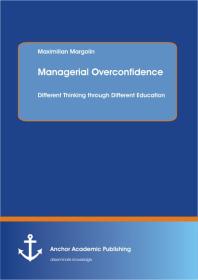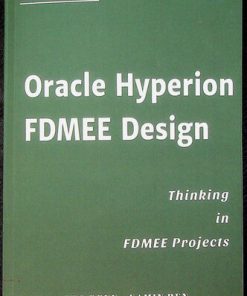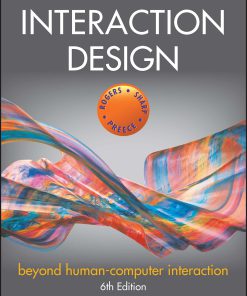Different Perspectives in Design Thinking 1st Edition by Yvonne Eriksson 1000557146 9781000557145
$50.00 Original price was: $50.00.$25.00Current price is: $25.00.
Different Perspectives in Design Thinking 1st Edition by Yvonne Eriksson – Ebook PDF Instant Download/Delivery: 1000557146, 9781000557145
Full dowload Different Perspectives in Design Thinking 1st Edition after payment
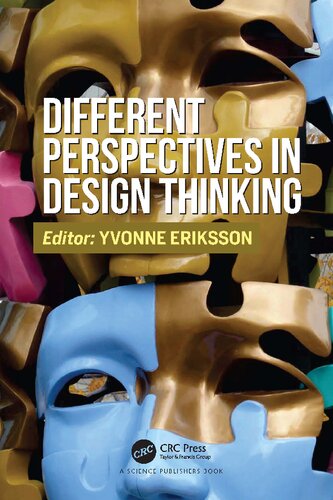
Product details:
ISBN 10: 1000557146
ISBN 13: 9781000557145
Author: Yvonne Eriksson
Globalization and digitalization are buzz words in contemporary society. They affect both our private and our professional lives. Society has become more diverse with easier access to information and to virtual platforms that gives us opportunity to be in touch with colleagues, friends, family, etc. at any time. A complex environment is emerging wherein internet of things and big data are being integrated with products, production systems, healthcare, and daily activity and play an important part in decision making. This has an impact on future designs and the role of designers. Responsible designers with a holistic perspective are needed. The book highlights several aspects of design thinking such as Information Design and Critical Design. The meaning of culture, gender and disabilities are also discussed. The functions of Information Design are changing from ‘showing the way’, instruction manuals and graphic design. It will affect among others, healthcare technology, smart products and Industry 4.0. Design thinking perspective that includes users from the entire chain and from the producer to the end user of the product or service, is needed. This will also require gender and culture issues to be taken into consideration in designing products and services. Design thinking methods and critical aspects of design will contribute to an inclusive society
Different Perspectives in Design Thinking 1st Table of contents:
1 Design Thinking between Myth and Methodology
Design Thinking and design research
Key propositions of Design Thinking
Design Thinking as thinking process
Design Thinking is question asking
Conclusions
References
2 Critical Design and Design Thinking vs. critical design and design thinking
Introduction
What is C/critical D/design?
What is D/design T/thinking?
Critical moves, critical path in linkography
Case study: Wang and Habraken’s critical path
Thoughts about design thinking and design criticality in innovative design
References
3 Adding Rigor to Advance Design Thinking
What is design thinking?
Empathy
Define
Ideate
Prototype
Test
Design thinking in organizations
What do we mean by UCD?
UCD as an evolving set of challenges
What is the theory and method base of UCD?
UCD in action
Framing the comparison in the context of design acts
The study of design
Reconciling UCD and design thinking approaches
Conclusion
References
4 Situated Design Thinking
Introduction
Thinking of norms in design
Thinking of knowing in design
Thinking of acting in design
Towards a framework of situated design thinking
Conclusion
References
5 The Challenge of Designing Meaningful Information
Different methods and perspectives
Communication: from perceiving information to sharing with others
The relationship between the interpretation of information and situation awareness
Different forms of verbal information
Semiotic pragmatism
An information campaign for a global pandemic
The complexity of using metaphors in information
Design Thinking and human center design
Information as physical, spatial, and temporal
Conclusion
References
6 Gendered Design Thinking So-called Logic of People and Things
Introduction
“Doing gender”
Sex vs. gender
Gendered design history
Visual communication and gender
Forms and norms
Interaction norms
Design and gender systems
Conclusion
References
7On Design Dialogues Their Roots, Features, and Usage Ulrika Florin
Introduction
Design Dialogues—a means for complex design
The design dialogue and its roots
The characteristics of design dialogues
Tangible material
Artefacts in group processes
Complex problems
Examples from practice
Mulimodal Origami in Vis’man
Ideas behind MO
What MO is—and what it does
Planting Tomorrows
Concluding reflections
References
Recycled Art and Design objects in Planting Tomorrows
8 Design Thinking and Designerly Ways of Knowing in Operational Research Practice
Introduction
Design thinking in operational research
Herbert Simon and the science of design
Soft Operational Research and Problem Structuring (SORPS) and the founders of operational research
Soft Operational Research, Problem Structuring methods and their
Soda
Action research
Soft Systems Methodology (SSM)
Systems thinking
Strategic Choice Approach (SCA)
Management cybernetics
Policy research design
Mixed methods in Operational Research—bridging the socio-technical
Analytics
Modelling
PartiSim
System dynamics
Mixed methods
MCDM (also called MCDA—Multi Criteria Decision Method/Analysis)
Conclusion
The future of design in operational research
References
9 Design Thinking and Welfare A Focus on Information Design
Introduction
Design thinking and information design for welfare technology
Welfare technology in care services
Implementation of welfare technology
Orientation to welfare technology use
Methods
Welfare technology used in the study
Needs for implementation and orientation
End-users at home
Caregivers
Care managers
Information-design-related lessons learned
Implementation and orientation
Information quality attributes
Visualization and use of the lessons learned
Conclusion
Acknowledgements
References
Appendix Datasets and analysis
Datasets
Data analysis
10 Raising Users’ Confidence in their own Technology Literacy as part of the Design Process
Introduction
Feeling of belonging and belief in one’s own ability
Methods for user involvement and design
Understanding the user group
Workshops and hands-on experience
Aspects to consider during the design process
Arranging focus groups and workshops
Creating a social context
Mixing people with different backgrounds
Testing the technology together
Introducing new technology
Supporting the learning process
Supporting the learning process
Discussion and conclusions
References
11 Lessons Learned A Plea for Curricularizing Design Thinking in Engineering Education
Introduction
Back to the roots
Why design engineers should become design thinkers
Characteristics of user-centred design engineering practice
Characteristics of the design thinking way of thinking
Course of action
Doing design thinking
Design task and background
Course design
Thinking design and proving design thinking innovations
Outcome assessment
Summary of key learnings
Best practices for carrying out actions and activities
Reflections on the findings and implications for engineering education
Learning objectives in engineering education being successfully targeted by design thinking
Closing remarks
References
Appendix
Index
People also search for Different Perspectives in Design Thinking 1st :
different perspectives in stories
different perspectives in history
different perspectives in drawing
different perspectives in writing
Tags:
Yvonne Eriksson,Different Perspectives,Design Thinking
You may also like…
Education Studies & Teaching - School Education & Teaching
Design Thinking in Play An Action Guide for Educators 1st Edition Alyssa Gallagher
Education Studies & Teaching - School Education & Teaching
Relationships & Lifestyle - Health - Diseases & Disorders
Computers - Computer Certification & Training
Education Studies & Teaching - Educational Guidance & Counseling
Interdisciplinary Design Thinking In Architecture Education 1st Edition Julie Ju-Youn Kim



